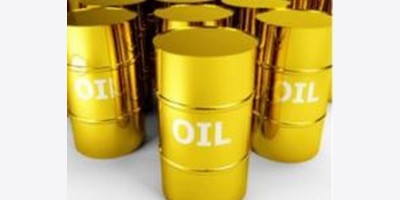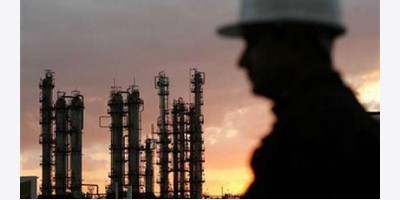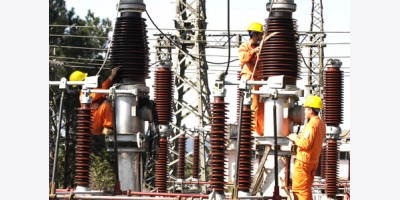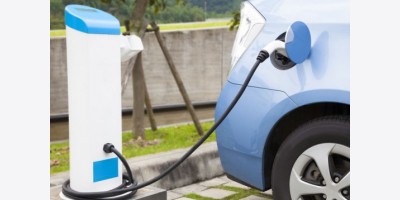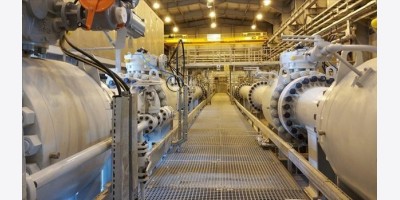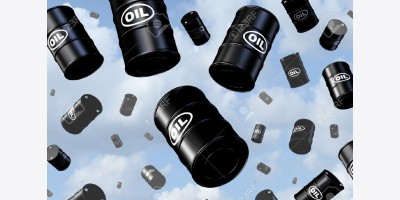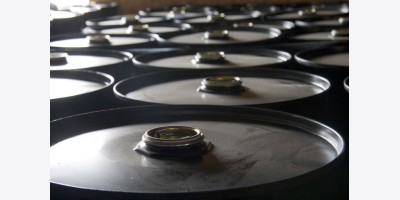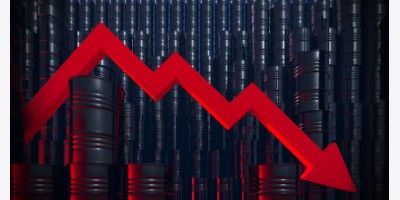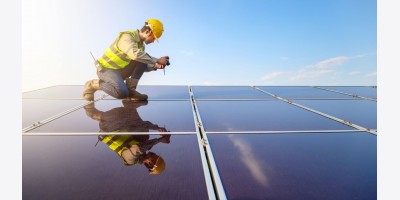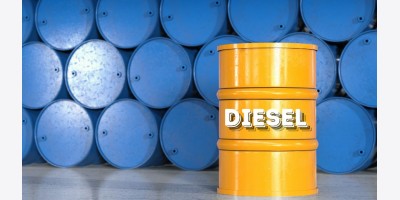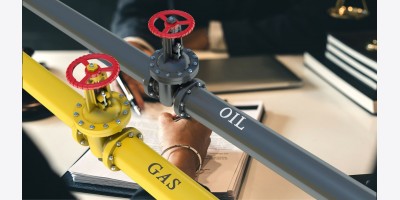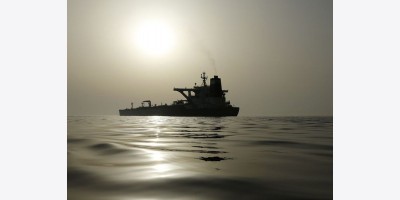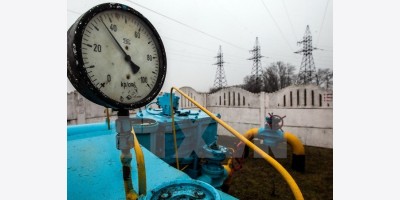CAIRO, 13 hours, 52 minutes ago
Egypt said it expected to receive around $425 million in funding from the Islamic Development Bank to develop an oil refinery in Assiut and an airport in the Red Sea resort of Sharm El Sheikh.
The first agreement is for $198 million earmarked for the refinery, a finance ministry statement said.
A further $226.8 million (not $8.23 million) will go towards the first phase of the Sharm El Sheikh airport project, it said. Egypt has requested a further $223.2 million for the second phase of the project.
The Islamic Development Bank is an international financial institution that funds development projects in Muslim countries and communities in accordance with Islamic law.
Egypt's economy has been in turmoil since the 2011 uprising that ousted Hosni Mubarak. The government is navigating a difficult course as it seeks to cut its deficit, while reviving flagging growth and encouraging investors and tourists spooked by the political upheaval.
Gulf states have provided more than $12 billion in cash and petroleum products to prop up Egypt's economy since the ouster of Islamist President Mohammed Mursi a little over a year ago. But the government has introduced painful cuts to energy subsidies as it seeks to curtail spending and shore up finances.
The lending will come in the form of a tenancy contract, which is an Islamic funding structure, and will be repaid over 15 years. It will be guaranteed by the finance ministry.
The Islamic Development Bank made financing contributions worth about $1.85 billion in Egypt between July 2013 and August 2014, the statement said, adding that Egypt would also seek external sources of funding for other development projects. -- Reuters
DUBAI, 19 hours, 24 minutes ago
Mina Group, a global energy services and infrastructure company, has won multiple contracts from the US Department of Defense (DoD) to supply fuel to locations in Eastern Europe.
Mina Group's subsidiary, Red Star Enterprises, has won competitive tenders to supply jet fuel to the DoD's Defense Logistics Agency in various locations in Poland, Lithuania, and Estonia. These awards follow Red Star Enterprises' DoD Defense Logistics Agency contract for Latvia signed in June this year.
"These recent awards further increase our presence in the Baltic region where Mina is now providing fuel in multiple locations across three countries and becoming a significant regional player," said Graham O'Donoghue, Group president & CEO of Mina Group.
“Mina's ability to mobilize resources at short notice and its commitment to timely and reliable delivery of product - even in the most challenging conditions - make us a trusted partner for customers who demand precision and reliability," he added.
"These contract awards are the second and third in under three months to be won in the Baltic region, each in a competitive process," noted Zack Friedman, Group executive vice president and CFO.
"The region is an important expansion zone for Mina's global footprint and we look forward to tendering for further contracts in the months ahead,” he added. – TradeArabia News Service
Oman Oil Refineries and Petroleum Industries Co (Orpic) plans a scheduled turnaround work at its 106,000 barrels per day (bpd) Mina Al Fahal refinery in November for three weeks, the operator said.
"Mina Al Fahal (MAF) Refinery is scheduled to have a planned mini-turnaround in November. This is in order to upgrade certain equipment," the company said in an emailed statement.
"The mini-turnaround will take three weeks from start to finish - including shutdown and startup. There will be no impact on customer supply."
Orpic operates two refineries: Sohar with a total processing capacity of 116,000 bpd of Omani crude and Mina Al Fahal.
Oman pumps around 950,000 bpd of crude and aims to maintain this level for the next two to three years. – Reuters
Kuwait’s plans to boost refining capacity by over 50 per cent are still on track, a senior oil official said, despite having to extend tenders to build a 615,000-barrel-per-day (bpd) refinery that has faced delays and political opposition in the past.
Mohammed Ghazi Al Mutairi, chief executive of state-run refiner Kuwait National Petroleum Company (KNPC), said closing dates for tenders to build the country’s fourth refinery, known as Al Zour, have been extended until November 2014 and January 2015 after the companies involved asked for more time.
Japan’s JGC Corp, Britain’s Petrofac, US-based Fluor Corp, and Italy’s Saipem are among 15 firms that have been shortlisted for the Al Zour refinery, he said.
“We are targeting April 2015 to sign the contracts for al Zour,” Mutairi told Reuters at his office in Kuwait City. “Our plan is to increase our refining capacity to 1.415 million bpd (mbpd) by mid-2019. Today we are at 930,000 bpd, so it is a big jump.”
Al Zour refinery, one of the biggest in the Middle East, is expected to start operations by May 2019 after closing dates for the tenders have been pushed back by few months, he said.
The refinery, estimated to cost around $13 billion, will produce oil products such as diesel, kerosene and naphtha for export and low-sulphur fuel oil for domestic power stations. Such mega projects are a test for Kuwait, which has struggled to upgrade its infrastructure and attract foreign investors, partly due to political squabbling and bureaucracy.
Kuwait’s plans to upgrade and expand two of its existing refineries, known as the Clean Fuels Project, is also part of the Gulf state’s KD30 billion economic development plan, which has been delayed by politics in the past.
Under the project, the capacity of Mina Al-Ahmadi refinery will drop to 347,000 bpd from 466,000 bpd, while Mina Abdulla refinery’s capacity will rise to 454,000 bpd from 270,000 bpd now. The 200,000 bpd Shuaiba refinery will be shut down.
The reduction in the capacity of Ahmadi refinery after shutting one of its crude distillation units will be compensated by adding new units to produce higher value products such as diesel and kerosene for export, Mutairi said.
Nearly 1.8 billion megawatt hours (MWh) of energy was consumed by the UAE to achieve a total annual GDP (gross domestic product) of $377 billion in 2013, according to Heliocentris, a German market leader in energy saving solutions.
This amount of energy could be sufficient to power all of the nation’s households for more than 15 years and around 70 million households for a whole year.
The figures were released ahead of Critical Communication Middle East 2014, a trade specific show dedicated to critical communications technologies in the Middle East, which opened today (September 15) at the Jumeirah Beach Hotel in Dubai, UAE. It will conclude on September 16.
Heliocentris offers clean energy solutions, training and research in the field of ICT, to help businesses to control, monitor and reduce their energy usage, providing technology to improve both operational and financial performance so as to meet the next generation’s energy demands today.
A research report by World Resources Institute revealed that in 2013, the UAE used 481 tonnes of oil equivalent (TOE) for every $1 million of its GDP. By comparison, a predominantly urban population such as Japan uses 154 TOEs for every $1 million of GDP, more than two thirds less than the UAE. On the basis of a total annual GDP of $377 billion in 2013, the energy used to achieve the total GDP equates to 1.8 billion MWh.
Michael Kutschenreuter, general manager of Heliocentris’ Dubai based Middle East operations said: “Everyone knows that with natural resources being cheap and freely available in the UAE, it is the obvious fuel of choice both domestically and industrially. “
“However, it’s only when you drill into these figures that you realise what a staggering amount of energy is involved and, more importantly, by how much it could be reduced. It is therefore important to implement energy saving solutions, based primarily on sustainable energy, such as solar and photovoltaic systems. Gradually we are seeing more and more customers switching to our technology, with the know-how that it can save them more than 50 per cent of their diesel consumption, especially in the telecoms sector.”
Since Heliocentris began operating in the UAE in 2012, their energy efficiency solutions have saved more than 10,000 tonnes of carbon dioxide (CO2) emissions, he said.
“We have seen a steadily growing interest from some of the leading telecom operators to combine different sources of sustainable energy, including fuel cells. We definitely have the right approach and technology to meet the high requirements in terms of security and availability for Tetra Networks where we are able to provide completely clean energy solutions for this increasing demand in the market,” Kutschenreuter added. – TradeArabia News Service
Saudi Arabia and Kuwait are the Gulf countries which are most dependent on oil revenues despite moves to diversify economies in the region, according to a new report.
Saudi-based investment firm Alkhabeer Capital said in a report that the annual budget spending in GCC countries still continues to be driven almost entirely by income from the export of hydrocarbons although the contribution of non-hydrocarbon GDP to the overall GDP has significantly increased over the past two decades.
It added that since the global financial crisis, the GCC economies have consistently outperformed their global peers, supported by robust oil revenues.
Hydrocarbon revenues in Qatar and UAE account for close to 60 percent of the total revenues of the countries, while in Saudi Arabia and Kuwait, the figure is close to 90 percent and 93 percent respectively, Alkhabeer said.
This is in contrast to other resource rich economies such as Norway, where revenues from oil account for just about 30 percent of government revenues.
The report said: "The low contribution of the non-hydrocarbon sector primarily reflects the policy decision of maintaining a low or zero-tax environment to assist private sector activity.
"Although there has been speculation of introduction of GCC-wide value added tax, we do not expect such a decision in the foreseeable future.
Alkhabeer said the UAE, specifically Dubai, has been exemplary in diversifying revenue streams and building on its non-oil growth, which is projected by the IMF to expand by over four percent annually over the next few years.
With its recent rights for the World Expo 2020, Dubai will be able to transform itself into a hub for retail and wholesale trade and tourism.
Abu Dhabi has the highest hydrocarbon reserves and generates more than half of the GDP in the UAE. The government envisages cutting the capital's reliance on oil to 36 percent of GDP by 2030.
The Alkhabeer report said the overall fiscal position of the GCC remains stable but there are several key steps that need to be taken to lower dependence on oil revenues and mitigate long term risks that may arise as a result.
It noted: "With the IMF projecting dramatic change in the fiscal environment by the end of the decade, a close watch must be kept on the fiscal policy stance of the region's governments, which must be cognisant of the prospect of lower hydrocarbon revenues.
"A well poised strategy must be put in place to diversify the GCC economies and increase their non-oil revenues to mitigate long term challenges. Another pressing issue that must not be ignored is the subsidy bills for Gulf governments, with energy subsidy costs in some of the GCC countries as high as 28 percent of government revenues."
Kuwaiti crude oil exports are expected to fall as a result of global oversupply and the strength of the dollar, a senior Kuwaiti oil sector official said Monday.
But while crude export volumes are set to decline, Kuwait will increase its refined product exports, bringing in higher profits, Jamal Al-Loughani, Kuwait Petroleum Corp.’s managing director for international marketing, was quoted as saying by the KUNA news agency.
According to official figures published by the Joint Oil Data Initiative, or JODI, Kuwait’s crude exports so far in 2014 have averaged between 1.9 million b/d and 2.05 million b/d. The most recent export high was in May 2013 when volumes averaged 2.23 million b/d.
Kuwait exports 80% of its crude to Asia, with the remainder going to Europe and the Americas, Loughani said. In the past month, Kuwait has signed a number of supply deals with customers in China and the Philippines.
KPC on August 22 signed its largest-ever crude oil supply deal with China’s Unipec — the trading arm of state-owned Sinopec — to supply 300,000 b/d of crude oil over a 10-year period starting this year. Volumes could increase to 500,000 b/d under the deal.
to supply 65,000 b/d of crude in 2015. Loughani also said that compared with forecasts of growing Asian demand, it is a different picture in the US where demand for imports is falling due to the growth of production from domestic shale plays, and Europe as a result of the continued economic weakness.
“The oil [the US] imports from western Africa and Latin America will shift eastwards,” he said. Loughani said the recent fall in oil prices was due to the “improvement in the political situations in Ukraine and Russia,” the formation of a wide ranging alliance against the Islamic State militant group in Iraq and Syria, as well as the restoration of some stability in Iraq.
In addition to this, prices are also being affected by a market glut and the strength of the dollar, the KPC executive said.
Sanctions imposed on Russia by the United States and European Union over Moscow’s role in the Ukraine crisis could constrain oil supply in the longer term and lead to higher prices, former BP chief executive Tony Hayward has warned.
The US Treasury on Friday banned the export of goods, services and technology related to Arctic, deepwater and shale oil projects to five Russian energy companies — Rosneft, Lukoil, Gazprom, Gazprom Neft and Surgutneftegaz.
Friday also saw expanded EU sanctions on Russia come into force. These target Russia’s largest oil producer Rosneft, Gazprom’s oil subsidiary Gazprom Neft, and national pipeline operator Transneft. Brussels restricted the companies’ access to EU capital markets as well as to services for deepwater, Arctic and shale oil exploration and production.
Haywood, who is chief executive of Genel Energy and chairman of Glencore, said in an interview with the Financial Times on Monday that denying Russian oil and energy groups access to international capital markets and western oil technology would reduce investment in Russia’s upstream sector
“The world has been lulled into a false sense of security because of what’s going on in the US,” Hayward said, in a reference to the shale oil-driven boom in US oil production that has markedly reduced the US’ reliance on imports. “When US supply peaks, where will the new supply come from?”
Kazakhstan is expected to produce 81.8 million mt, or 1.64 million b/d, of crude in 2015, flat on this year’s target and on the level demonstrated in 2013, the country’s economy minister Yerbolat Dosayev said Monday at a meeting in the parliament.
In 2019, the country is expected to raise the output to some 96 million mt, Dosayev said at his presentation of Kazakhstan’s updated economic strategy, according to the economy ministry’s statement. The updated outlook is in line with the energy ministry’s earlier expectations that the giant Kashagan oil field, seen as the key driver of Kazakhstan’s crude output for years to come, will not resume production at least until the first half of 2016.
Crude production at Kashagan, one of the world’s largest offshore fields, located in North Caspian, was officially launched last September after a decade of delays and huge cost overruns. The field was expected to produce some 8 million mt, or an average 160,000 b/d of crude, in 2014.
After 2018, crude production from the field was expected to reach 1.5 million b/d, slightly exceeding the current combined crude output of all other Kazakh fields.
However, Kazakhstan had to shelve the plans and shut Kashagan last October due to corrosion damage in the pipelines connecting the offshore production area with the onshore processing facilities. The damage and resulting hydrocarbon leaks were caused by high hydrogen sulfide content in Kashagan’s oil and gas, which reaches 15-18%.
Prior to Kashagan’s launch, in October 2012, Kazakhstan’s oil and gas ministry projected the domestic crude output to raise to 90 million mt in 2015 and grow progressively to a peak of 135 million mt in 2025 before flattening to some 110 million mt until 2030.
Kazakhstan’s crude production in January-August dropped 0.7% year on year to 53.6 million mt, according to data from Kazakhstan’s statistical agency published last week.
Norway’s government will consider whether to replicate the latest EU sanctions against Russia, but doing so is not automatic, its foreign ministry said Monday.
Norway has previously replicated EU sanctions imposed on Russia in response to its involvement in the Ukrainian crisis, but is not bound to do so by any agreement with the EU, a foreign ministry spokesman said.
Regarding the latest EU measures on Friday, “we will carefully consider the new restrictions and seek approval with parliament if we’re going to join them,” he said.
Norway’s Statoil is a partner with Russia’s Rosneft in projects to explore frontier offshore areas including in the Sea of Okhotsk and the Russian portion of the Barents Sea.
Statoil CEO Helge Lund told Platts last month that sanctions already in place would lead to delays. Some media reports have suggested that a landmark Russian Arctic facility, the Prirazlomnaya platform in the Pechora Sea, is heavily dependent on Norwegian technology.
On Friday, the EU extended its sanctions to restrict access to EU financial markets by Rosneft, Transneft and Gazprom Neft, although it avoided directly sanctioning Gazprom, a major gas provider to the EU.
The sanctions also widened restrictions on providing services for deepwater oil exploration and production, Arctic oil exploration and production, and shale oil projects. Rosneft is working on an asset swap with Norwegian drilling giant SeaDrill relating to the latter’s Norwegian unit North Atlantic Drilling, which is providing a semi-submersible rig currently being used by Rosneft and ExxonMobil to drill Russia’s northern-most well, in the Kara Sea.
UK explorer Hurricane Energy said Monday its Lancaster oil find in waters west of the Shetland Islands could flow at 20,000 b/d from a single well, far greater than originally thought. The UK’s West of Shetland oil province is considered the country’s most promising region for new oil projects with majors Chevron and France’s Total also set to bring resources on stream in the near future. Hurricane made the Lancaster find in shallow water in 2009 and flowed light oil from faulted and fractured basement rock with a gravity of 38 API.
It said Monday that further data analysis showed that appraisal well 205/21a-6 was “optimally located” to benefit from a 300 meter oil column. “The results from third party analysis combine to demonstrate a very good quality reservoir which could deliver single well rates of 20,000 b/d — significantly ahead of initial expectations of well productivity,” the company said in a statement.
Hurricane holds 100% of the Lancaster licenses, one of two similar-sized basement discoveries west of the Shetlands in its portfolio. The company raised GBP49.4 million ($81.3 million) in an initial public offering on London’s Alternative Investment Market in January this year, with BP investing in the process.
Hurricane CEO Robert Trice said the latest data analysis allowed the company to “significantly advance” its understanding of how the fracture network behaves. “Importantly, the key metrics related to oil productivity are even better than expected providing us with further encouragement regarding the productive potential of Lancaster and our other basement assets,” Trice said.
He added that Hurricane would welcome a new partner to help develop the assets. “However the benefit of having two suspended proven producers and holding 100% of our acreage means that we have a broad range of options to progress the Lancaster Field development and our other assets,” Trice said. “Such a level of productivity means that an early phase of field development and commercial production could be initiated with the addition of only one more horizontal well,” he said.
MOSCOW, Sept. 15 (UPI) -- Russian oil company Gazprom Neft said Monday it reached a milestone with the production of its 1 millionth barrel of oil from the arctic Prirazlomnoye field.
Gazprom Neft Board Chairman Alexander Dyukov said his is the first Russian company to pull oil from the Russian arctic shelf.
"The production of the millionth barrel of oil at the Prirazlomnoye field is a milestone and further proof of the consistent development of the project and its final transition into full-scale development," he said in a statement. "Gazprom Neft plays a leading role in developing oil deposits on the Arctic shelf and we can build on this experience for new Arctic projects in the future."
The company expects 2.2 million barrels worth of production from Prirazlomnoye during the first full year of development. A tanker with 1 million barrels worth of storage capacity is set to leave the field for Europe "in the next few days."
Last year, Greenpeace advocates later dubbed the Arctic 30 scaled a rig set for work in the arctic field to raise awareness about the risks of an oil spill in the harsh northern environment.
Gazprom Neft said a stationary rig at the site is designed specifically to ensure the risks of a spill are minimized to the greatest extent possible.
TEHRAN, Sept. 15 (UPI) -- Gas can't be sent through a pipeline to a power plant in Iraq until next year because of the security situation there, an Iranian development official said.
The 60-mile pipeline is designed to export 176 million cubic feet of natural gas per day from Iran's offshore South Pars field. Iraq, for its part, has struggled to ensure around-the-clock electricity despite its vast natural resource wealth.
Alireza Gharibi, managing director of the Iranian Gas Engineering and Development Co., said the pipeline was ready for full-scale testing, but couldn't pinpoint a set date for normal operations.
"Iran's gas cannot be exported to Iraq under the current insecure conditions, hence it will be exported to Iraq early next year," he said Saturday.
U.S. and international forces are coordinating a measured response to help Iraq contain militants with the Islamic State, a Sunni-led terrorist group in control of parts of Iraq and Syria.
Gharibi last month said the 60-mile gas pipeline was in the pre-startup phase and gas had reached al-Mansurya power plant across the border.
BRUSSELS, Sept. 15 (UPI) -- The trade deficit for energy for the 28 members of the European Union was down 8 percent from the first six months of 2013, data Monday show.
Eurostat, the statistical office for the European Union, published trade data for the first six months of the year.
For energy, the EU 28 posted a $222.6 billion deficit from January to June, 8 percent lower than the previous year.
Eurostat provided no data on specific energy trade. Nevertheless, with members of the EU trying diversify an energy market dependent on Russia, Eurostat showed overall imports from Russia were down 6 percent during the first six months of 2014 when compared to last year.
Trade with Norway, another top energy supplier to Europe, was down 5 percent year-on-year.
In May, the agency reported seasonally adjusted gross domestic production for the EU 28 during the second quarter rose 0.2 percent year-on-year.
MOSCOW, Sept. 15 (UPI) -- A spokesperson for the Russian Energy Ministry said Monday it was postponing trilateral talks with the European Union and Ukraine.
Talks were scheduled for Saturday. A ministry spokesperson told state news agency RIA Novosti an alternate date depended on Energy Minister Alexander Novak's schedule.
"We told the European Commission that the proposed date is not suitable for us," the spokesperson said. "Another date is being discussed."
The European Union last week enforced new sanctions on the Russian energy sector in response to ongoing crises in eastern Ukraine.
A government decision in Kiev in November to suspend efforts to join the EU sparked political upheaval in Ukraine, a former Soviet republic. That, in turn, led to intervention by Russia, which annexed the Crimean Peninsula and has supported separatists in eastern Ukraine.
On Saturday, Ukrainian Prime Minister Arseniy Yatsenyuk submitted to Parliament the text of an association agreement with the EU.
Europe is trying to avert a repeat of an energy crisis that erupted in 2006 and 2009 when Russian natural gas company Gazprom cut gas supplies to Ukraine because of contractual disputes.
Europe gets about a quarter of its gas needs met by Russia, though most of that runs through the Soviet-era pipeline network in Ukraine.
ANKARA, Turkey, Sept. 15 (UPI) -- Turkish Energy Minister Taner Yildiz said a report Ankara wasn't doing enough to interrupt oil ties to the Islamic State was part of smear campaign.
Yildiz said the government in Ankara is abiding by laws meant to curb the trade of oil taken from territory controlled by the Islamic State.
"We have not been informed about it, and the whole world knows we would take necessary measures if we were told about something like that," he said Monday.
The Saturday report in the New York Times suggests NATO ally Turkey can't be persuaded to do what it takes to interrupt a black market for oil. James Phillips, a regional export at the Heritage Foundation, said the Turkish market may be benefiting from cheap oil smuggled by terrorists.
"I'm sure there are substantial numbers of Turks that are also profiting from this, maybe even government officials," he said in Saturday's article.
The Turkish government has so far balked on getting behind an international effort to take on the Sunni-led militant group. Yildiz said the article in the Times, which relies heavily on senior U.S. officials speaking on background, is meant to damage Turkey's reputation.
"I believe this report has a purpose," he said.
By Daniel J. Graeber | Sept. 15, 2014 at 9:57 AM | 0 Comments (Leave a comment)
OSLO, Norway, Sept. 15 (UPI) -- A subsidiary of Norwegian oilfield services company Aker Solutions said Monday it won a $465 million contract for work off the coast of Brazil.
Subsidiary Aker Oilfield Services secured the five-year contract from Brazilian energy company Petrobras.
The Norwegian company said a support vessel in a shipyard in Norway will be converted for deep water operations under the terms of the contract. The vessel will be used to help install and retrieve equipment used to recover oil from fields off the Brazilian coast.
The contract begins in the fourth quarter of 2016.
Brazil ranks second behind Venezuela in proven oil reserves in South America. Offshore production is complicated because much of the oil reserves lie beneath a thick layer of salt.
Petrobras, formally known as Petroleo Brasileiro, has struggled with production levels in the past, but attributed the declines to scheduled maintenance at its offshore fields.
U.S. oil services company Baker Hughes last week was cleared to form a partnership on subsea production technology with Aker Solutions.
MOSCOW, Sept. 15 (UPI) -- A spokesman for Royal Dutch Shell said Monday the company was reviewing what impact, if any, sanctions would have on its ties to the Russian energy sector.
"We are proud of our strong partnership with Russian companies," the spokesperson said. "We will explore the latest sanctions and their possible impact on our business."
The European Union last week enacted tighter sanctions on Russia's energy sector in response to ongoing crises in Ukraine. The measure was enforced in coordination with Washington.
Russia's government relies heavily on oil revenue. A spokesman for Shell told state news agency RIA Novosti the sanctions were under review.
The Russian currency was trading at a record low against the U.S. dollar as sanctions started to take their toll on the Russian economy.
Shell is working alongside Russian energy company Gazprom on the Sakhalin liquefied natural gas project in the Far East. The project is part of Russia's efforts to tap into growing Asian markets.
Russian officials have said sanctions pressure from the West was coming at a time when business interests were shifting toward Eastern markets.
NEW ORLEANS, Sept. 15 (UPI) -- A natural gas pipeline off the coast of Louisiana was closed Monday in response to a deadly accident, Chevron Pipe Line Co. said.
Chevron was mum on the details surrounding the accident, but revealed a contract worker died and two others were injured while performing routine maintenance on a pipeline at a site six miles off the coast of Louisiana.
The company said in a statement it "regrets" the accident and announced the pipeline was shut down Monday so a site investigation can proceed.
Chevron's pipeline provides fuel to the Henry Hub storage facility in Louisiana, considered the benchmark site for U.S. gas pricing. Chevron Pipeline Co. said it was rerouting most of the gas to through a different pipeline.
Louisiana officials said the line experienced a valve failure Saturday. There were no reports of sheen at the site.
London (Platts)--15Sep2014/958 am EDT/1358 GMT
Ukraine increased natural gas reserves in its underground gas storage facilities by 1.7%, or by about 264 million cubic meters, over the past seven days, data released by Gas Storage Europe over the weekend indicate.
The country accumulated 16.22 billion cubic meters of natural gas as of September 13, compared with 15.95 Bcm as of September 6, according to GSE, a non-profit Brussels-based organization that provides energy statistics to the EU.
Ukraine is facing difficulties in accumulating enough gas in the reserves this season after Russia, the country's main gas supplier, cut to zero supplies to the country June 16, citing price and debt payment disagreements.
The country is preparing to survive the upcoming winter without Russian gas supplies by counting on domestic gas production and imports of European gas.
Ukraine September 2 started massive imports of gas from Slovakia via Vojany-Uzhgorod pipeline. The pipeline is delivering up to 27 million cu m of gas per day, which is enough to cover 40% of the country's gas import demand, according to the state gas shipper UkrTransGaz.
Ukraine plans to store up to 17.2 Bcm of natural gas in its storage facilities by October 15 to offset increasing demand in the winter and to ensure steady Russian gas supplies to Europe, according to the energy and coal industry ministry.
Ukrainian gas storage facilities, which are capable of holding about 32 Bcm of gas annually, are currently filled at 50.8% of their total capacity, according to the GSE.
SLOVAKIAN IMPORTS KEEPS UP INJECTIONS
Ukraine storage injection rates were stable from the week earlier at 268 million cu m, with no impact from the reduction of imports from Poland, Bentek data shows.
Imports from Slovakia are currently at 95% of capacity and flows doubled to 182 million cu m from previous week, when the Vojany-Uzhgorod pipeline capacity was impacted by commissioning flow tests.
Imports from Hungary and Poland were at 45 million cu m/week, just 2 million cu m down over the preceding week, as an increase from Hungarian flows did not fully compensate the 6 million cu m/week drop in receipts from Poland.
Regardless of an improved injection rate, the outlook for the Ukraine's inventories target at the beginning of the winter looks increasingly challenging without Russian deliveries.
A Platts analysis shows Ukrainian storage inventories are likely to miss the 20 Bcm target at the beginning of the winter by using only reverse flows from Poland, Hungary and Slovakia, and it might only reach the 17.1-17.9 Bcm range.
In the absence of Russian imports, total supply before the beginning of the winter is expected between 3.1 Bcm and 3.3 Bcm.
The current 17 Bcm/year entry capacity suggests Ukraine could import at most 1.95 Bcm from Hungary, Poland and Slovakia by mid-October.
Although, steady low 25% utilization rates in the import pipeline from Hungary suggest that 1.25 Bcm is a more realistic estimation of what can be imported by Ukraine from those EU countries by mid-October.
In terms of domestic production, historical data suggest that it can be estimated at 1.8-2.0 Bcm cu m by mid-October.
On the demand side, measures to reduce consumption have not yet yielded a material change in demand compared to the previous year's range of 2.35-2.9 Bcm, with the major impact being an expected 0.4-0.8 Bcm drop in industrial demand due to the unrest in eastern Ukraine.
This suggests the country could consume most of the gas it produces and imports from EU countries.
If Ukraine relies only on imports from EU countries, it could boost its stocks by no more than 1.7 Bcm to around 17.9 Bcm.
This stocks estimate is also close to the average weekly increase of 180 million cu m in inventories observed since July 4. If kept constant over the five weeks preceding the beginning of winter, it would put the total storage inventories at 17.1 Bcm.
For inventories to reach 20 Bcm by the beginning of the winter, the required volume would need to average 756 million cu m/week, or more than four times the amount observed in the last eleven weeks.
Ukraine and the EU authorities had considered 20 Bcm in storage as the minimum amount needed to ensure smooth transit of Russian gas through Ukraine to the EU this winter, while avoiding demand management measures.
More recently, on September 4, Ukraine's energy and coal industry ministry said 17.2 Bcm would be enough.
However, a Platts analysis on September 13 showed that in a cold winter scenario, such as that of the winter of 2011-12 when consumption was 41.3 Bcm, up to 5.3 Bcm of end-user demand might be restricted or switched to other fuels.
* Price of oil falls below Russia's budgeted level
* Russia has so far ruled out joint action with OPEC
(Reuters) - Russian Energy Minister Alexander Novak will meet OPEC officials on Tuesday in Vienna, his spokeswoman said, as oil's price fall piled pressure on Moscow's budget.
The annual meeting had been planned long before oil fell below the $100 per barrel level critical for Russia's oil sales which account for 40 percent of state budget revenues.
Russia suffered from a decline of oil production and prices this year and has cut its outlook for oil output as core Western Siberian fields become more depleted.
The spokeswoman said that Novak and the officials from the Organization of the Petroleum Exporting Countries had not planned to discuss the prices of oil, which hit 26-month low for Brent crude on Monday.
However, a government source told Reuters that the measures to prop up the prices have long been discussed at the ministry.
"The talk of closer cooperation with OPEC on prices have long been there," he said.
So far, Russia, the world's top producer of conventional oil, has ruled out coordinated action with OPEC to halt the price decline.
Oil prices have slid due to concern about weakening demand and ample supplies, raising the question of whether Saudi Arabia, holder of the world's largest spare output capacity, will curb output. Brent crude fell below $100 last week for the first time in 14 months.
OPEC oil ministers have not expressed pressing concern about the drop in prices, seeing it as a temporary dip and predicting prices will rise as higher seasonal demand arrives with colder weather.
Russia has had a bumpy relationship with OPEC, with pronouncements of interest in acting together not resulting in significant action, even after the price slump of 2001-2002.
Oil ministers from the Middle East Gulf said last week the oil price drop was unlikely to spur action by the OPEC unless crude fell below $85 a barrel.
This is less than the $104 per barrel on average written into the 2014 Russian budget.
Most analysts expect oil prices to fall in the coming years as new production, including from unconventional sources in North America, applies downward pressure to markets, with some forecasts going as low as $70 per barrel for Brent crude oil in 2020 from $96.6 currently.
(Reuters) - ConocoPhillips, the largest U.S. independent oil and gas company, is preparing to auction its 24 percent stake in the Clair oilfield in the United Kingdom, the Financial Times reported on Monday.
The Houston-based company has hired banks to sell its stake in the Clair oilfield in a deal that could fetch between $2 billion and $3 billion, according to the FT report, which cites people familiar with the matter.
Clair oilfield, which was discovered in 1977 and extends over 220 square kilometers (135 square miles), is located in Scottish territorial waters west of the Shetland islands.
The oilfield has an estimated 8 billion barrels of oil, making it the largest hydrocarbon resource in Europe, according to oil major BP Plc's website.
BP, ConocoPhillips, Chevron Corp and Royal Dutch Shell Plc were developing a second phase of the oilfield, known as Clair Ridge, at a cost of 4.5 billion pounds, with production estimated to start in 2016/2017. (Reporting by Krishna Chaithanya; Editing by Ken Wills)
Houston (Platts)--15Sep2014/330 pm EDT/1930 GMT
Imports of liquefied natural gas into Argentina registered a 7% decline in July from the same month in 2013, while domestic gas production ticked up 0.7% over the same period, recent data from Argentina's General Mosconi Institute and Platts unit Bentek Energy showed.
Argentina imported 1.492 million cubic meters of LNG in July, compared with 1.611 million cu m in July 2013. The year-on-year decline in LNG imports in July was the first on record going back to 2009. Average temperatures in the capital city of Buenos Aires are the coldest of the year in July and correspond with significant increases in LNG imports used largely for residential and commercial heating needs.
While total domestic gas production in Argentina ticked up just 0.7% in July compared with the same month last year, YPF registered a 15% increase in production, and Pan American Energy saw a 3.9% bump in production, General Mosconi Institute data showed.
The modest uptick in domestic gas production has recently contributed to a sense of optimism regarding gas supplies in Argentina. In August, LNG imports totaled just 1.303 million cu m, a 19.3% decline from the same month in 2013, when the South American nation imported 1.614 million cu m.
In early September, Argentina suspended a widely anticipated buy tender for 13 LNG cargoes delivering from November through March 2015, market sources said.
Some market sources have since disputed claims made by YPF about being sufficiently supplied with natural gas, saying that Argentina's recent debt default may be impacting the country's ability to purchase LNG on the international market.
Washington (Platts)--12Sep2014/353 pm EDT/1953 GMT
At recent natural gas prices, analysts at Barclays Research said Friday that coal-to-gas displacement will not reach the heights it did in 2012 and 2013, with implied average coal displacement in 2014 of 2.5 Bcf/d, or about 74% of that in the previous year.
"While current prices certainly are lower than the high levels during the peaks of the winter, they are not lower than in years prior when we estimated larger amounts of implied coal displacement in the market," analysts said in a report released Friday.
The NYMEX Henry Hub front month futures contract hit a 10-year low of $1.907/MMBtu on April 19, 2012. Dry natural gas production in April 2012 totaled 1.95 Tcf, compared with 1.87 Tcf in April 2011 and 1.73 Tcf in April 2010. The trend has continued with April 2013 output at 1.98 Tcf and April 2014 output at 2.07 Tcf.
Despite the upward trend in dry natural gas production, prices have been supported by record demand for natural gas during the polar vortex this past winter, leaving a large storage deficit at the end of March. According to the US Energy Information Administration, the winter of 2013-2014 led to a large drawdown in inventories, with stocks ending March 2014 almost 1 Tcf lower than the five-year average and at their lowest end-March level since 2003.
Still, the storage deficit has narrowed amid cooler-than-normal summer temperatures and continued increases in natural gas production.
"The large storage deficit at the end of March has narrowed significantly so far this injection season -- more quickly than in years past. As of September 5, EIA data indicated that the storage deficit to last year's level had already narrowed significantly, but we believe that it will narrow further to about 300-400 Bcf by the end of October and for October storage to be around 3.5 Tcf this year," Barclays added.
Given the weak demand for natural gas in the summer, Barclays analysts have lowered their average price forecast for Q3 2014 and Q4 2014 to $3.93/MMBtu and $3.95/MMBtu, from $4.40/MMBtu and $4.50/MMBtu, respectively.
Price targets have been revised lower for 2015 as well, in light of shifting demand sources and continued production growth, Barclays said. The average price for 2015 was lowered to $4.01/MMBtu from $4.24/MMBtu.
Coal displacement in 2015 is estimated at 2.7 Bcf/d, slightly above the 2014 target.
"While total demand will likely increase [year on year] in 2015, continued supply growth means that coal displacement will need to run at high enough levels to avoid filling storage beyond usable capacity in 2015. As a result, gas prices will hunt for the level that displaces just enough coal, while keeping storage at normal end-of-season levels," Barclays said.
Rio de Janeiro (Platts)--15Sep2014/301 pm EDT/1901 GMT
Burgeoning production from Brazil's subsalt oil fields will likely make Latin America's largest country a big crude oil exporter, with sales of between 1.5 million-2 million b/d by 2022, the head of the country's National Petroleum Agency, or ANP, said Monday.
"We are going to be important exporters of crude oil," ANP Director Magda Chambriard during a presentation at the Rio Oil & Gas 2014 conference.
The ANP estimates Brazil will more than double the country's production of about 2 million b/d and reserves of 15.6 billion barrels of oil equivalent between 2020 and 2022, Chambriard said.
"If that production is confirmed, if the level of development expected is confirmed, that means that Brazil will export 1.5 million-2 million b/d by 2018-2020," Chambriard said.
That should generate as much as a $65 billion positive impact on Brazil's trade balance, she said.
While Chambriard did not provide details about how the oil would be marketed, the oil should be extremely attractive on international markets because the subsalt is currently producing light grades rated higher than 31 API. The crude is also on the sweet side, with lower sulfur content than was previously expected when the subsalt was first discovered.
The majority of Brazil's oil production growth will come from the offshore region, where billions of barrels of crude were found buried in waters more than 2,000 meters deep and a further 5,000 meters below sand, rocks and a shifting layer of salt.
Nairobi (Platts)--15Sep2014/930 am EDT/1330 GMT
Kenya has cut the retail pump prices of gasoline, diesel and kerosene to reflect the fall in the cost of importing oil products, the Energy Regulatory Commission said late Sunday.
Fuel prices affect inflation in Kenya, which relies heavily on diesel for transport, power generation and agriculture and kerosene as a household cooking and lighting fuel.
The ERC cut the cost of gasoline to Shilling 111.64 ($1.26)/liter, down Shillings 4.98, effective from midnight Sunday.
The price of diesel was reduced by 62 cents to Shillings 102.36 and that of kerosene by Shillings 1.42 to Shillings 81.65.
The government has been reviewing retail fuel prices monthly since 2010, taking into account fluctuations in the international market and the shilling-dollar exchange rate and cost of freight among other factors.
The ERC attributed the reduction in prices to the depreciation of the Kenya shilling against the dollar, which cut import costs.
Gasoline import costs declined 6.97% from $1,076.74/mt in July to $1001.64/mt in August.
The cost of importing diesel fell 0.77% from $925.40/mt in July to $918.30/mt in August.
The average cost of importing kerosene decreased by 3.45% from $990.75/mt in July to $956.53/mt in August.
The country depends on oil products imported from the Middle East and India after Kenya Petroleum Refineries Ltd.'s Mombasa refinery was shut on September 4, 2013.
London (Platts)--15Sep2014/735 am EDT/1135 GMT
The discount of 50 ppm sulfur gasoil to 10 ppm ultra low sulfur diesel in Northwest Europe on Friday closed at its narrowest in five months due to greater buying interest for the heating oil in Germany, market sources said Monday.
50 ppm FOB ARA gasoil barges closed at $846.75/mt on Friday, $0.75/mt lower than 10 ppm, the narrowest spread between the two products since March 17.
Heating oil demand in Germany has picked up marginally, traders said, typical for this time of the year.
"We are going into winter so this is the time of the year in which they seasonally build stock...also the flat price collapsed, the price looks cheap to end users," said one trader.
Outright gasoil prices have fallen sharply over the last three months following low seasonal demand and general bearishness in the products and crude markets.
The 50 ppm gasoil price hit a more than 16-month low last week of $845.50/mt.
In addition to marginally higher demand, traders said that the current specification difference between the 50 ppm heating oil and the ULSD was also a factor contributing to the narrower price spread.
Other than sulfur content, current intermediate specification ULSD traded in the barge market differs slightly than 50 ppm on cold properties, with traders saying it is not unusual for the heating oil to trade near the diesel price.
However, traders say that with the next subsequent switch to winter-grade diesel, an even more stringent specification on cold properties, the two product prices could move away from each other.
"Lower sulfur is only marginally more expensive...now that we are moving to intermediate- and winter-grade 10 ppm, I think the differential will be widening from these levels," a second trader said.
Singapore (Platts)--15Sep2014/559 am EDT/959 GMT
Taiwan's state-owned CPC has changed the price formula of low sulfur fuel oil it sells to certain domestic buyers, to mitigate some of the losses from the resale of imported LSFO, company sources said late last week.
CPC will now price fuel oil it supplies to certain industrial and other buyers based on a combination of its own production cost and import cost, where the price basis will remain as the monthly average of Mean of Platts Singapore 180 CST high sulfur fuel assessments, a Taipei-based company source said.
The state-owned refiner used to price its LSFO supply to these buyers at the monthly average of MOPS 180 CST HSFO assessments in the previous month, a Singapore-based company source said Friday.
"This scenario of CPC selling fuel oil at a price lower than the cost means the company has been subsidizing the fuel in the long term. As an example, the value of LSFO subsidies last year was as much as NT$1.6 billion ($53.2 million), while that for the first seven months of this year has reached NT$1.1 billion," the company said in a statement early last week.
It noted that while the import of fuel oil in Taiwan was deregulated in 1999, other oil marketers and refiners have been unwilling to provide supplies mainly because of the subsidies borne by CPC.
It now accounts for 90.5% of fuel oil supply in the domestic market.
The company said fuel oil imports in 2013 accounted for 32% of its total sales and the proportion rose to 42% over January to July this year and it has been unable to fully reflect the cost of imported LSFO in its domestic pricing, resulting in losses.
CPC noted that Japan's Fukushima nuclear disaster in 2011 has led to a general increase in global LSFO prices while refinery upgrades around the world have also led to a decline in LSFO supply, further pushing up prices.
CPC has also changed the date of setting its domestic fuel prices from first to the fifth of every month, the company said.
Meanwhile, the pricing basis of its LSFO sales to biggest buyer -- state-owned utility Taiwan Power, or Taipower -- will remain unchanged.
"Most of the LSFO we import is for domestic use in the utility sector. We haven't changed the formula to sell to Taipower," said a third company source Friday.
"What we charge Taipower is the same as what we pay for it to suppliers when we import."
CPC is the only company that imports LSFO for supply to Taipower.
New York (Platts)--15Sep2014/502 pm EDT/2102 GMT
ICE October Brent futures settled 46 cents lower at $96.65/barrel, a front-month close not seen since June 2012, as weaker-than-expected Chinese economic data stoked concerns about the global economy and sluggish oil demand growth.
NYMEX October crude futures closed 65 cents higher at $92.92/b. In refined products action, NYMEX October ULSD was essentially flat, up 9 points at $2.7396/gal, while NYMEX October RBOB settled 1.20 cents higher at $2.5308/gal.
It was the second trading session in a row that the front-month ICE Brent futures contract settled at a multi-year low. On Friday, ICE October Brent set its own record-low close since June 2012.
The last time front-month ICE Brent settled lower than Monday's close was on June 28, 2012, when it closed at $91.36/b.
News of slowing Chinese industrial production pushed down prices even further Monday, with an intraday low of $96.10/b posted.
Chinese manufacturing grew 6.5% in August, the lowest rate since December 2008, China's National Bureau of Statistics said Saturday. The August figure was below analysts' expectations of 8.8% growth, and July's 9% growth.
"Data is confirming that the US economy is doing better than the rest of the world right now," Phil Flynn, an analyst at Price Futures Group, said.
"The news out of China shows industrial data is worse than expected, plus you have Russian sanctions weighing on prices," he said, referring to the recent round of economic penalties imposed on Moscow for its role in the Ukraine crisis.
An unintended consequence of Russian sanctions could be to weaken the European economy, given the close business ties between the two sides, lowering oil demand in the process, analysts say.
Such a possibility only adds to the drumbeat of bearish news surrounding the European Union's economic outlook.
On Monday, the Organisation for Economic Cooperation and Development cut its projected euro zone growth forecast for 2014 and 2015. The euro zone economy is expected to grow 0.8% in 2014 and 1.1% in 2015, down from the OECD's forecast in May of 1.2% and 1.7%, respectively.
In the US, meanwhile, the Empire State manufacturing survey was 27.5 in September, the New York Federal Reserve said Monday, its highest level since October 2009.
Front-month ICE Brent has been on a decline since the summer, driven lower by ample supplies in the Atlantic basin and macro-economic data, especially in Europe and China, pointing in the direction of falling oil demand growth.
Political instability and fighting in the Middle East, North Africa and Ukraine loom as potentially bullish factors, but have yet to result in any supply disruptions, analysts say.
Crude production in Libya has been on the rise since August after rebels ended a year-long occupation of eastern ports -- Es Sider and Ras Lanuf -- allowing exports to resume.
Output has increased to 840,000 b/d, a spokesman for state-owned National Oil Corp. said Monday. Libya's oil production had sunk to 150,000 b/d.
Should threats emerge to Libyan or Iraqi crude production, oil prices could strengthen as investors rebuild some of the length they have shed the last few months, BNP Paribas analysts said in a client note Monday.
Money managers have cut their net ICE crude long futures position by two-thirds since its peak at the end of June from 14.8% to 5% of total open interest, they said.
"While recognizing the risk of attempting to 'catch a falling knife,' we nonetheless think Brent's chances to touch $110/b are higher than to sink to $90/b," the bank analysts said.
Singapore (Platts)--15Sep2014/931 am EDT/1331 GMT
Construction work on the fourth line of the Central Asia-China gas pipeline network started in Tajikistan on Saturday, China National Petroleum Corp (CNPC) said on its website Monday.
China's President Xi Jinping and Tajikistan's President Emomali Rahmon kicked off the opening ceremony for the section.
The 1,000 km Line D, with a transmission capacity of 30 billion cubic meters/year, will send natural gas from the supergiant Galkynysh field in Turkmenistan to China.
Galkynysh's first phase, which started in September 2013, has a capacity of 30 Bcm/year and an estimated cost of $10 billion, while the whole complex has reserves of 26.2 trillion cubic meters.
The second phase also has a capacity of 30 Bcm/year.
The fourth pipeline, which runs through Uzbekistan, Tajikistan and Kyrgyzstan, will be incorporated into the existing pipeline network that brings gas from Central Asian countries to China.
The current pipeline network, comprising lines A, B and C with a total length of around 5,496 km, passes through Uzbekistan and Kazakhstan before reaching China's western Xinjiang province.
Line D, which is expected to start gas supplies from 2016, will help increase China's total gas imports from Central Asia to 85 Bcm/year.
Volumes of gas from Turkmenistan will hit 65 Bcm/year by then.
In May, President Xi Jinping and Turkmen President Gurbanguly Berdymukhamedov signed an agreement to raise imports of Turkmen natural gas to 65 Bcm/year by 2016, and start the construction work of the fourth line.
BRUSSELS-The European Union Monday again postponed a decision on whether to grant Russia full access to its OPAL natural-gas pipeline, frustrating Moscow's efforts to boost energy exports to the 28-country bloc.
The European Commission cited technical reasons for the delay, which coincided with its announcement that planned talks between Russia, Ukraine and the EU to resolve a gas feud were also postponed.
The commission had hoped to hold the three-way gas talks in Berlin on Saturday in a bid to break the long-running deadlock between Kiev and Moscow, but said an agenda clash on the Russian side meant the negotiations would have to be held at a later date.
Russia suspended gas deliveries to Ukraine in June over a pricing dispute that the EU has been hoping to resolve ahead of winter, fearing energy shortages in several European countries that are heavily dependent on Russian gas imports.
No fresh date has yet been agreed, the commission said.
The OPAL pipeline transports Russian gas through Germany to the Czech-German border, bypassing Ukraine. Russia is currently allowed to use only 50% of the pipeline because of EU rules that aim to prevent firms that already dominate supply from also controlling distribution networks.
Russia has been seeking to bypass Ukraine as a major transit country for gas exports to Europe and its state-owned gas monopoly Gazprom had asked to be given exemptions from EU rules that prevent it from getting full access to the OPAL pipeline, arguing the pipeline was underused. It is the third time that the commission has delayed its decision on OPAL, which was originally due in March. The 290-mile pipeline transports Russian gas through Germany to the Czech border and has an annual capacity of 36 billion cubic meters.
"The reason for the prolongation is that certain technical aspects require further attention," a commission official said.
The EU is currently weighing other options to reduce its dependence on Russian natural gas, which accounts for over a third of EU supplies. Six EU countries, including Bulgaria and Lithuania, depend exclusively on Russia for natural gas.
Copyright (c) 2014 Dow Jones & Company, Inc.
By Bernice Napach 9 hours ago Yahoo Finance
Oil prices have fallen 15% over the past year, and they could slide further before stabilizing. That's good news for U.S. consumers who are paying an average of $3.41 for a gallon of regular gasoline -- the lowest price in six months, according to AAA.
"There's some downside still on prices, but I think we're near the bottom here," says Andrew Lebow, a senior VP for energy derivatives at Jefferies Bache. "Maybe another dollar or two on WTI and maybe another dollar or two on Brent.... We’re near the lows."
Sweet West Texas Intermediate crude is now trading just below $92 a barrel, down from $108 a year ago. Brent crude from the North Sea is trading at $97 a barrel -- near a two-year low, and at the narrowest spread to WTI since July.
Behind the drop in oil prices is a decline in demand coupled with an increase in supply despite all the turmoil in the Mideast and between Russia, a major energy producer, and Ukraine.
Global oil demand has fallen to its lowest level in 2-1/2 years because of the weakening economy in Europe and China, according to the International Energy Agency (IEA). That's contributing to a glut in supply which also reflects an explosion in U.S. oil production.
"In 2008 U.S. crude production was 5 million barrels a day," says Lebow. "It's now 8.6 million barrels per day and next year it's going to be 9.5 million barrels per day. ....That's had a significant effect on world markets."
The U.S. in fact has become the world's largest energy producer as a result of hydraulic fracking, which produces both oil and natural gas from shale, and the boom "has more room to run," writes Russell Gold in today's Wall Street Journal.
But that expectation should not obscure the potential for a supply cutoff, says Lebow. "We can't ignore the fact that Libyan production which has increased now to over 800,000 barrels per day and was just a few months ago 100,000 barrels per day," says Lebow. "And just a few months ago we were worried about supply disruptions from Iraq. It's a dangerous world. Energy prices are not completely secure."
Former BP CEO Tony Hayward, as quoted in the Financial Times today, says, "The world has been lulled into a false sense of security because of what’s going on in the U.S. When U.S. supply peaks, where will the new supply come from?” He's concerned that sanctions imposed by Western nations on Russia will reduce investment in Russian oil fields and ultimately limit global energy supplies.
imageMOSCOW: Exports of seaborne Russian Urals and ESPO crude oil blends were seen declining by 6.2 percent to 50.17 million tonnes in the last three months of the year from the previous quarter, traders said on Monday, citing a quarterly loading schedule.
Russia has been cutting crude oil exports as it has increased production of oil products from its refineries.
Traders also said that the Black Sea port of Novorossiisk is expected to load 7.4 million tonnes next quarter, down from 8.86 million tonnes. However, shipments of Azerbaijan crude via the port in the fourth quarter has not been yet agreed.
Russian crude exports from the Baltic Sea port of Primorsk were seen down to 11.5 million tonnes in the fourth quarter from 12.5 million tonnes in July-September.
Shipments from the neighbouring port of Ust-Luga were scheduled unchanged, at 6.5 million tonnes.
Fourth-quarter ESPO crude exports from the Pacific port of Kozmino were expected to edge down to 6.10 million tonnes from 6.15 million tonnes.
Copyright Reuters, 2014
By Andy Tully | Mon, 15 September 2014 19:11 | 0
Benefit From the Latest Energy Trends and Investment Opportunities before the mainstream media and investing public are aware they even exist. The Free Oilprice.com Energy Intelligence Report gives you this and much more. Click here to find out more.
The price of Brent crude oil dropped to below $97 a barrel on Sept. 15, its lowest in 26 months, depressed by both a continuing oil glut and lower demand. This follows the previous week’s drop of U.S. crude to a 16-month low.
Many factors on both the supply and demand sides have contributed to this slump, most recently word that growth in key sectors of China’s economy had cooled in August, particularly factory output, which was at its slowest pace during the month in almost six years. Further, this may indicate that China’s huge economy could be on the verge of an even larger slowdown.
Brent crude for October delivery fell as low as $96.21 per barrel, its lowest since July 2, 2012, then recovered a bit, but remained below $97. In the previous week, the price of October West Texas Intermediate dropped 17 cents to $91.50 per barrel on the New York Mercantile Exchange.
Analysts say the recent declines are all about high supply and low demand and were only accelerated by news out of China. One is Ric Spooner, chief market analyst at CMC Markets. “Economic growth in China is one of the key drivers of world growth and generally of oil demand,” he says. “It seems likely that [oil] demand growth won’t keep up with the growth in supply capacity.”
China reported a decrease in power generation for the first time since 2010. This followed last week’s estimates by the International Energy Agency that worldwide oil demand will drop in 2014 and 2015. It was the third consecutive month that the agency had cut its forecasts for demand. For 2014, it estimated growth of 0.9 million barrels a day, down by 65,000 barrels.
On the supply side, the United States is continuing to produce energy at record levels, and even strife-torn Libya is expected to increase oil production to 1 million barrels a day in October.
Even worse, Saudi Aramco and a partner, the Beijing-based energy company Sinopec, have begun testing a brand-new oil refinery in Yanbu on Saudi Arabia’s Red Sea coast that has a capacity of refining 400,000 barrels of oil per day. It could begin exporting oil no later than November.
The Yanbu facility is a twin of sorts of the Jubail plant on the Saudi Gulf coast, which is a joint venture between Aramco and the French oil company Total. It too has a capacity of 400,000 barrels per day and has been operating since September 2013.
The two plants were built to facilitate oil exports from Saudi Arabia: The Red Sea refinery would serve Europe and other Western customers, while the one on the Gulf would serve Asia. Right now, though, all they seem to be facilitating is a drop in the global price of oil.
By Andy Tully of Oilprice.com
WASHINGTON (AP) — Islamic State militants, who once relied on wealthy Persian Gulf donors for money, have become a self-sustaining financial juggernaut, earning more than $3 million a day from oil smuggling, human trafficking, theft and extortion, according to US intelligence officials and private experts.
The extremist group’s resources exceed that ‘‘of any other terrorist group in history,’’ said a US intelligence official who, like others interviewed, spoke on condition of anonymity to discuss classified assessments. Such riches are one reason that American officials are so concerned about the group even while acknowledging they have no evidence it is plotting attacks against the United States.
The Islamic State group has taken over large sections of Syria and Iraq, and controls as many as 11 oil fields in both countries, analysts say. It is selling oil and other goods through generations-old smuggling networks under the noses of some of the same governments it is fighting: Kurdish-controlled northern Iraq, Turkey and Jordan.
While US intelligence does not assess that those governments are complicit in the smuggling, the Obama administration is pressing them do to more to crack down. The illicit oil is generally transported on tanker trucks, analysts said.
There’s a lot of money to be made,’’ said Denise Natali, who worked in Kurdistan as an American aid official and is now a senior research fellow at National Defense University. ‘‘The Kurds say they have made an attempt to close it down, but you pay off a border guard, you pay off somebody else and you get stuff through.’’
The price the Islamic State group fetches for its smuggled oil is discounted —$25 to $60 for a barrel of oil that normally sells for more than $100 — but its total profits from oil are exceeding $3 million a day, said Luay al-Khatteeb, a visiting fellow at the Brookings Institution’s Doha Center in Qatar.
The group also has earned hundreds of millions of dollars from smuggling antiquities out of Iraq to be sold in Turkey, al-Khatteeb said, and millions more from human trafficking by selling women and children as sex slaves.
Other revenue comes from extortion payments, ransom from kidnapped hostages, and outright theft of all manner of materials from the towns the Islamic State group has seized, analysts say.
It’s cash-raising activities resemble those of a mafia-like organization,’’ a second US intelligence official said, reflecting the assessment of his agency. ‘‘They are well-organized, systematic and enforced through intimidation and violence.’’
Even prior to seizing Mosul in June, for example, the group began to impose ‘‘taxes’’ on nearly every facet of economic activity, threatening death for those unwilling to pay, US intelligence officials say. An analysis by the Council on Foreign Relations estimated the group was reaping $8 million a month from extortion in Mosul alone.
Once the group took over Mosul, in northern Iraq, and other areas, it grabbed millions of dollars in cash from banks, though not the hundreds of millions initially reported, US intelligence officials say.
This spring, four French and two Spanish journalists held hostage by Islamic State extremists were freed after their governments were alleged to have paid multimillion-dollar ransoms through intermediaries. The French government has denied making those or other ransom payments.
The Islamic State group ‘‘has managed to successfully translate territorial control in northern Syria and portions of Iraq into a means of revenue generation,’’ said a third US intelligence official.
Analysts say the group is relying on the fact that the area along the border between Iraq and Turkey has long been a smugglers haven, and was made more so by the fall of Iraqi leader Saddam Hussein in 2003. Generations of families have illicitly moved goods through the region.
The Islamic State is the successor to Al Qaeda in Iraq, which was founded by Jordanian Abu Musab al-Zarqawi. For a time, the group was allied with the Nusra Front, the Al Qaeda affiliate that is a key player among the rebels battling Syrian President Bashar Assad. The Islamic State group has since broken with the Nusra Front and Al Qaeda.
In the early days of the Syrian civil war, the Islamic State group was funded in large part by donations from wealthy residents of Gulf States, including Kuwait and Qatar, American officials have said.
A number of fundraisers operating in more permissive jurisdictions — particularly in Kuwait and Qatar — are soliciting donations to fund ... Al Qaeda’s Syrian affiliate, the Nusra Front, and the Islamic State of Iraq and the Levant (ISIL),’’ David Cohen, the Treasury department’s top counterterrorism official, said in a speech in March. ISIL is an alternative acronym for the Islamic State group.
That stream of funding has diminished in recent months as the group’s violent tactics have drawn worldwide attention, US intelligence officials say.
The group’s reliance on oil as its main source of revenue could easily be disrupted by American airstrikes, officials say. But so far, no decision has been made to target Iraqi or Syrian oil infrastructure, which is serviced by civilian workers who may have been conscripted.
By Stuart Burns | Mon, 15 September 2014 18:08 | 0
Benefit From the Latest Energy Trends and Investment Opportunities before the mainstream media and investing public are aware they even exist. The Free Oilprice.com Energy Intelligence Report gives you this and much more. Click here to find out more.
In a recent post we looked at the state of the crude oil market, how demand has been weak as a result of refinery maintenance closures in Europe and lower domestic consumption in China. Even though China is buying more crude, it has increased exports of refined oil products depressing prices in the Asian market and hurting regional refinery utilization rates.
A Crude Situation
The solution would be for crude oil producers to limit output, but with OPEC only controlling a third of world supply and no appetite among any of its member nations to reduce revenue streams, it seems voluntary reductions of any significance are unlikely. Saudi Arabia as the main swing producer is the most likely to adjust output and a report this week in the FT states output was reduced by 400,000 barrels per day in August from 10 million barrels per day to 9.6 m b/d, the fourth-largest one month drop on record.
At the same time, the kingdom is fighting for market share. A ThomsonReuters article reports Saudi Arabia has reduced its Arab Light blend official selling price by 5 cents per barrel to the regional Oman/Dubai market, bringing it to a US $1.70/barrel discount to September cargoes. This is the first time Arab Light has been at a discount to Dubai since November 2010.
So much for crude prices, what about refined products? If the world has an excess of crude – and with global inventory at 2.67 billion barrels, the highest in a year – it could be said to be awash in refined products. North American refiners are profitably running at decent utilization rates as they process low-cost US tight oil for the domestic market and a rising export market.
Something More Refined
European refiners are also running at acceptable margins and utilization rates and show little sign of significantly cutting output, so rising Middle East and Asian output is going to weigh on refined product prices in Q4.
Saudi Arabia is just about to bring onstream the second of two 400,000 b/d refineries at Yanbu on the west coast, following hot on the heels of the similar-sized Jubail refinery on the east coast which came onstream a year ago. The Saudis may have reduced crude exports last month but they will be looking to substitute that with refined product next month. Combined supply of crude and refined output will not change.
For the time being, the biggest casualties will be the Asian refiners facing increased supply from state-supported Chinese refineries and the new Middle East capacity, but gradually the surplus will make itself felt in Europe and beyond. The question is: will the usual rise in winter demand combined with possible (but probably limited) crude production cuts from OPEC be enough to support refined product prices this winter? Or will we see further price weakness?
What This Means For Oil Buyers
In our previous article, we pointed out the risk of possible rising crude prices from disruptions to what has been a benign supply market this year in spite of many potential threats. Even if crude price falls stabilize, however, refined products could continue to show weakness in the face of a growing surplus of refining capacity.
by Stuart Burns
(Source: www.agmetalminer.com)





